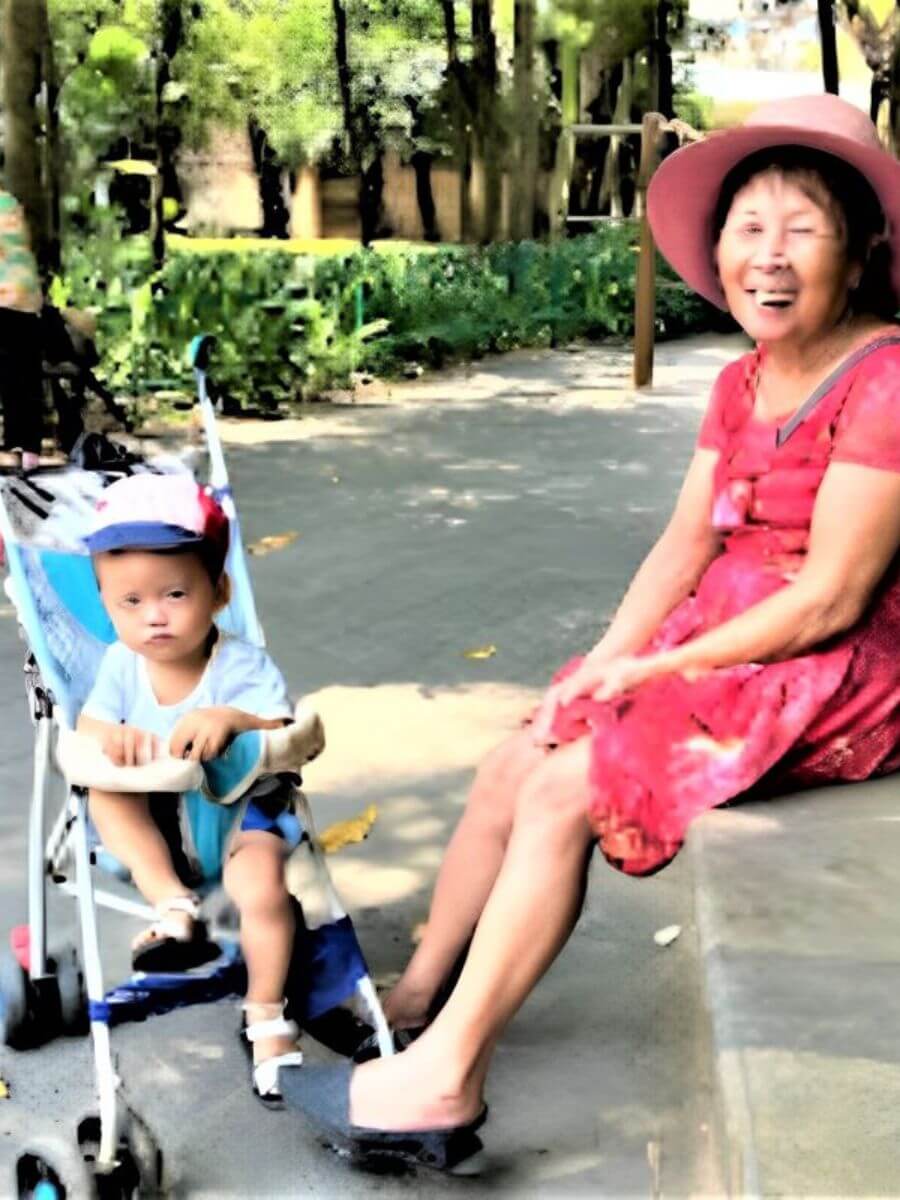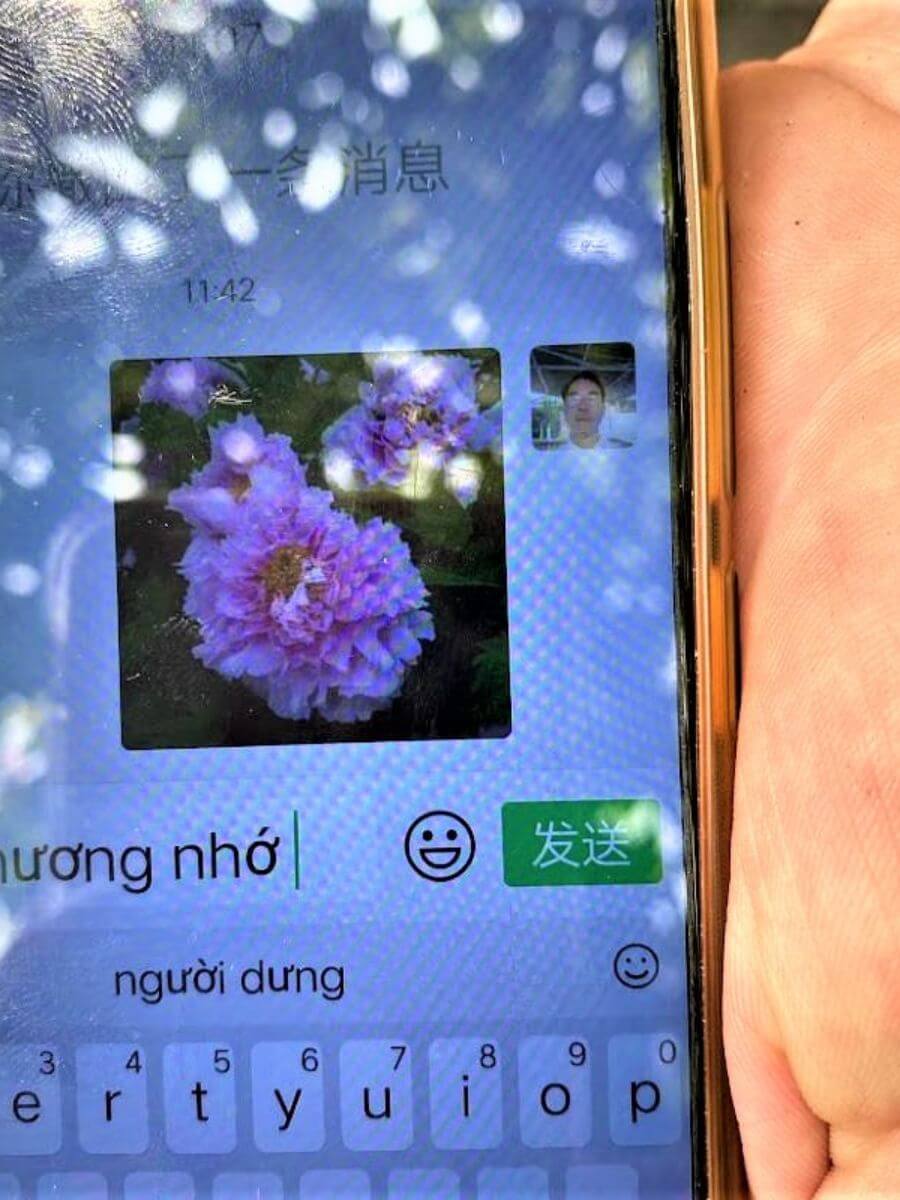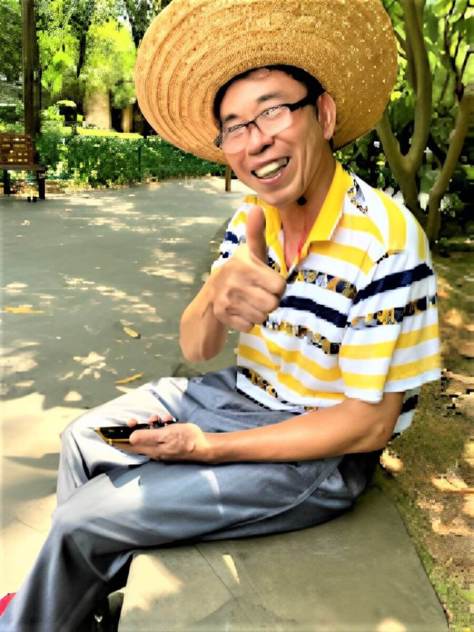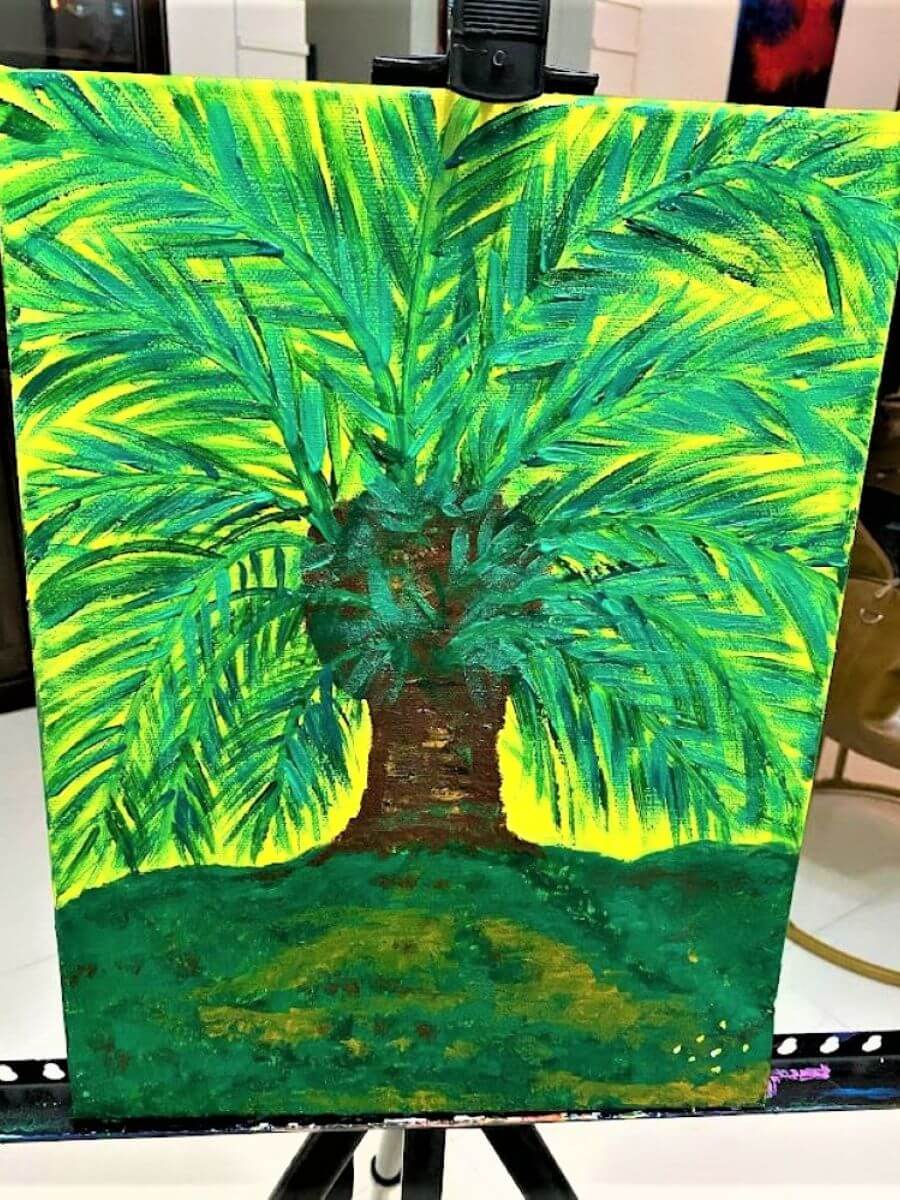Estimated reading time: 15 minutes
Discover how an unexpected encounter beneath a lonely palm tree in Hainan, China, taught valuable life lessons about connection, empathy, and transcending language barriers.
This inspiring journey will show you the power of seeking connection, even in the most unlikely places.
Table of contents
Background
I found myself at a crossroads in the stillness of a Hainan afternoon.
It was 2020, and I had recently uprooted my life in bustling Beijing to seek solace on this tranquil island. Initially exhilarating, the move left me feeling like a solitary wanderer in a foreign land, isolated by language and culture.
As I gazed out from my new home’s window onto the serene landscape of Hainan, the sense of disconnection was palpable.
Then, I decided to take a chance on change, seeking refuge in the inviting embrace of a nearby park.
Beneath the shade of a lonely palm tree, the unexpected unfolded, and my life would forever be enriched by the wisdom of an old man and the profound lessons he shared.
Gripping Chill of Loneliness
My heart felt like an anchor, dragging me down into a sea of loneliness.
My shoulders slumped under the weight of this emotion, and a dull grayness enveloped my outlook on this new chapter of my life.
I could feel tension rippling through my back, a physical manifestation of the emotional chill settling behind my knees.
“I feel so alone,” I couldn’t help but think, punctuating the silence with a heavy sigh.
To quell these thoughts, I sought refuge in the reassuring familiarity of my freshly organized apartment.
I didn’t have furniture yet, but I purchased a large window cushion to create a bed in the middle of the living room.

Always a planner, I packed a pillow, pillowcase, sheet, and a towel in my suitcase when I moved from Beijing.
This was enough to start over.
Feeling Hollow
The bright, sunlit rooms and my freshly made bed offered a sense of accomplishment, starkly contrasting my inner desolation.
Yet, even in the comfort of my new abode, questions nagged at my mind.
“I wonder if I will ever meet any friends here?” I pondered, my uncertainty casting a shadow over my surroundings.
“Hainan is so small, and there aren’t many foreigners here. Did I make the right move?”
Doubt lingered in the air. Its presence was as palpable as the emptiness of my furniture-less, bleach-smelling apartment.
The warmth of familiar faces and the comforting rhythm of shared conversations are all replaced by an unsettling void of isolation. The initial excitement of my move had given way to the stark coldness of feeling alone in a sea of unfamiliarity.
“I’m alone, lost in translation, and I really miss the company,” I admitted to myself, my voice echoing in the silence of my thoughts.
It was at that moment, as if spurred by an inner resolve, I decided I needed to change my state.
This state of mind, heavy and burdened, was leading me nowhere useful, and I yearned to break free from its suffocating grip.
It was a sensation gnawing at my soul, urging me to seek connection amidst the solitude of Hainan’s natural beauty.
Taking Action for Connection
With a sense of purpose, I packed up my cherished painting supplies and portable easel.
Painting had become my sanctuary in this sea of solitude.
During the long weeks of lockdown in Beijing, it had been my self-care lifeline, a way to embrace mindfulness and unlock the elusive flow state through artistic absorption.
Each brush stroke became a pathway to escape the confines of time, as one day seamlessly merged into the next within the walls of my apartment.
However, I was determined to seek inspiration beyond walls on this particular day.
I ventured into the Hainan sunshine, a mere ten-minute walk from home, and settled near a short bench.

As I scanned the surroundings for a composition capable of lifting me out of the emotional funk, I realized it was time to paint a picture and my path back to connection and vitality.

The Lonely Palm Tree
In the heart of the park, amidst the vibrant greenery and the soft rustling of leaves, stood a small palm tree.
A solitary sentinel in a sea of tranquility.
Its slender trunk rose defiantly, adorned with elegant branches swaying gently in the breeze.
As I set up my easel and prepared my canvas, the palm tree seemed to echo the very essence of my solitude.
Its branches, reaching out into the empty expanse, mirrored my yearning for connection.
Like fleeting thoughts in the wind, the delicate dance of its leaves symbolized the ebb and flow of emotions within me.
In that moment, it was as though the tree had become an extension of my own soul. A silent companion in my quest to bridge the gap between isolation and belonging.
Its simple yet profound presence resonated with the loneliness that had brought me to this spot, and I felt an inexplicable kinship with this lone palm tree.
Surprising Interaction
My solitude beneath the palm tree was short-lived, for the park soon came alive with the hum of human interaction.
It began with the arrival of an older woman, accompanied by her lively grandchildren. Their laughter and exuberance filled the air, cutting through the isolation that had enveloped me.

The children, their eyes wide with curiosity, peered at my canvas, intrigued by the foreigner who had set up a makeshift studio beneath the palm’s protective shade.
As the minutes ticked by, other grandparents approached cautiously, sensing something unique in the air. Their inquisitive smiles breaking the barriers of language and culture.

They watched with keen interest as I attempted to capture the essence of the lone palm on my canvas. Each brushstroke bridging the gap between us.
But the arrival of three senior-aged men truly transformed that day.
With a friendly nod, they settled beside me, their weathered faces etched with stories of a lifetime.

We communicated through gestures and warm expressions, transcending the limitations of spoken language.
Laughter became our universal language as we shared moments of camaraderie in the simple act of creation.
Connection But Lost in Translation
The park had become a canvas of its own, painted with the colors of unexpected connections.
From the initial encounter with the older woman and her grandchildren to the arrival of the seasoned men, this unlikely gathering of souls began to breathe life into the dormant canvas of my existence.
Amidst the blossoming connections in that serene park, the language barrier remained a formidable obstacle.
My knowledge of Chinese was limited at best, and I often struggled to express even the simplest of ideas.
Conversations with the locals were like cryptic puzzles, with words floating in a sea of uncertainty.
The most heartwarming moment unfolded during one of these puzzling exchanges.
Seated beside me, one of the elderly men, his grasp of Chinese as tenuous as mine, gestured toward his phone.
In broken words and animated charades, he conveyed his desire for assistance in editing a photo, an image he wanted to share with the world.

With a smartphone as our intermediary, I attempted to understand his request, my fingers dancing across the screen to show him how to add words to his cherished photograph.
Our laughter echoed through the park as we fumbled through this unconventional lesson in digital artistry, transcending language through a shared desire to connect.
In that moment, it became evident language was merely a vessel for communication.
True understanding could transcend words, woven into the fabric of shared experiences and empathic connections.
It was a poignant reminder of how, sometimes, the most profound connections are born in the silence between spoken words.
Profound Realization
The turning point of that unforgettable day came when the elderly man beside me extended a small notebook from his wallet.
He handed it to me with an air of trust. His eyes filled with a kind of earnest hope transcending language.
The notebook was filled with unfamiliar characters, a cryptic puzzle holding the key to his story.

As I held the notebook in my hands, perplexed yet intrigued, he turned to a page adorned with two rows of characters.
One row was in Chinese, but the other was written in a language foreign to me.
Then, I realized our connection wasn’t limited to the confines of spoken words. With the magic of technology, I pulled out my phone and used a translation app to decode his message.
What I discovered was nothing short of profound.
Discovery and Connection
The man was from Vietnam, and the second row of characters was Vietnamese.
His note was carefully crafted to show the most important details. It had his name, age (76 years old), and a sentence about how he has lived in Hainan for a decade.
I read the third line of Chinese characters. This one was familiar to me.
“I don’t speak Chinese very good.”
After reading it, I turned to him, smiled, and said in Chinese, “I’m the same as you. I don’t speak Chinese very good.”
His face lit up. He clapped his hands and threw his head back, and we both laughed.
We found our middle ground for communication and, in that moment, fully understood each other.

It was humbling to realize our shared challenges in this unfamiliar land had brought us together. Bridging worlds and weaving a common thread between the old man, the solitary palm tree, and myself.
In that instant, the isolation I felt dissolved, replaced by a powerful connection of language, time, and place.
Common Ground
Amidst laughter, we shared a playful language lesson, gesturing toward various objects and naming them in Chinese.
Curious, his two friends joined us. I swiftly retrieved my phone, displaying an image of the United Nations, triggering another bout of hearty laughter.
One of the men, eager to communicate, borrowed my translator. Speaking into my phone, his words transformed into English, “I’m from Thailand,” prompting another round of shared mirth.
Then, one of them playfully gestured at my painting, his bald head mirroring the round top painted on the canvas.
We couldn’t contain our laughter, and the joyous moments seemed endless.

Life Lessons about Connection
In the wake of the remarkable encounter beneath the solitary palm tree, my heart swelled with gratitude for the profound lessons unfolding that day.
As I reflect on the experience, three invaluable life lessons came sharply into focus, etching their wisdom into my soul.
Change Your State for Connection
First, I learned we must change our state no matter our circumstances.
In the face of isolation and disconnection, I took the initiative to seek out connection, which made all the difference.
Loneliness is a formidable adversary, but it’s not insurmountable.
We have the power within us to change our emotional state, to reach out, and to connect with others, no matter how challenging our circumstances may seem.
Share Stories for Connection
Second, I discovered our stories are unique to us but not so different from others.
In the park that day, I encountered people from different walks of life, each with their own struggles and triumphs.
Yet, beneath the surface, our shared humanity became apparent.
We all yearn for connection, understanding, and companionship.
It was a stark reminder that while our individual stories may be distinct, the threads of commonality binding us are far stronger than the differences setting us apart.
The Art of Building Connections
Lastly, I was reminded that decoding messages during conversations requires empathic listening, understanding, and building connections.
I learned that true communication transcends words in a world where language can be a barrier.
It’s about truly listening to the unspoken messages, embracing empathy, and forging genuine connections with those around us.
The elderly man’s notebook, filled with his personal details, was a testament to the power of connection through understanding, even in the absence of shared language.
In that park, beneath the quiet shade of a solitary palm tree, I had painted a canvas and etched these life lessons deep into my heart.
They are a constant reminder that the bonds we form with others, the bridges we build, and the connections we nurture are the true colors painting the canvas of our lives.
Change Your State, Change Your Mindset
Since that transformative day beneath the palm tree in the Haikou park down the street, the lessons I learned have profoundly reverberated through my life.
The impact has been undeniable, guiding my actions and shaping my perspective on the world, especially as a foreigner living in a foreign land.
Everything was new to me, and sometimes, the social rules of Canada didn’t translate into my experiences in China.
But, this day in the park illustrated familiar reminders.
These lessons have illuminated my path toward connection and empathy.
I’ve made a conscious effort to seek out opportunities to connect with others, even in the most unexpected places.
Whether striking up conversations with strangers or simply listening more intently to those I already know, I’ve realized every interaction can bridge gaps and build understanding.
Moreover, I’ve learned to re-embrace the beauty of shared stories.
Every person we meet carries a unique narrative. Listening and empathizing opens doors to deeper connections.
I’ve found when we acknowledge our shared humanity, we become more compassionate and capable of fostering meaningful relationships.
Tips for Taking Action When You Feel Isolated
When you feel lonely, muster up all of your courage and take proactive steps in your own life to seek connection and combat feelings of isolation:
- Step out of your comfort zone: Sometimes, connection lies just beyond the boundaries of our comfort zones. Don’t be afraid to take that first step, whether it’s striking up a conversation with a stranger or joining a new social group or activity.
- Practice active listening: Truly hearing what others have to say deepens your understanding and fosters stronger connections. Practice empathy by putting yourself in their shoes and seeking to understand their perspectives.
- Embrace shared experiences: Find common ground with others by exploring shared interests and experiences. These commonalities are powerful bonding agents, helping to bridge gaps and create meaningful connections.
- Volunteer or join community activities: Engaging in volunteer work or community activities is a great way to meet like-minded individuals and contribute to a sense of belonging.
- Utilize technology for connection: In our digital age, technology can be a powerful tool for connecting with others, especially when physical barriers exist. Join online forums, social media groups, or virtual communities aligned with your interests and values.
- Be open to serendipity: Sometimes, the most profound connections occur when we least expect them. Be open to serendipitous encounters and the magic they bring to your life.
In the end, the journey to connection is a deeply personal one. But the rewards of overcoming isolation and forging meaningful relationships are immeasurable.
Summary
The world is a vast mosaic of diverse experiences.
Embracing this diversity, we uncover the beauty of shared stories and the strength of our common humanity.
I’m reminded of the lessons learned beneath that palm tree in Hainan each time I walk past the painting of the lonely palm tree hung in the middle of my now-furnished apartment.

It reminds us how the world is filled with opportunities for connection and our shared humanity is a powerful force uniting us all.
In summary, we must remember:
- No matter our circumstances, we can change our emotional state and seek connection even in the most unlikely places.
- Our individual stories may be unique, but our shared human experiences bind us beneath the surface.
- True understanding and connection transcend words and require empathic listening, genuine understanding, and a willingness to bridge gaps.
In a world where isolation and disconnection can sometimes feel overwhelming, remember the old man, the solitary palm tree, and the powerful connection that emerged on that fateful day.
Thanks for stopping by!
Until next time,
Suzanne





You must be logged in to post a comment.